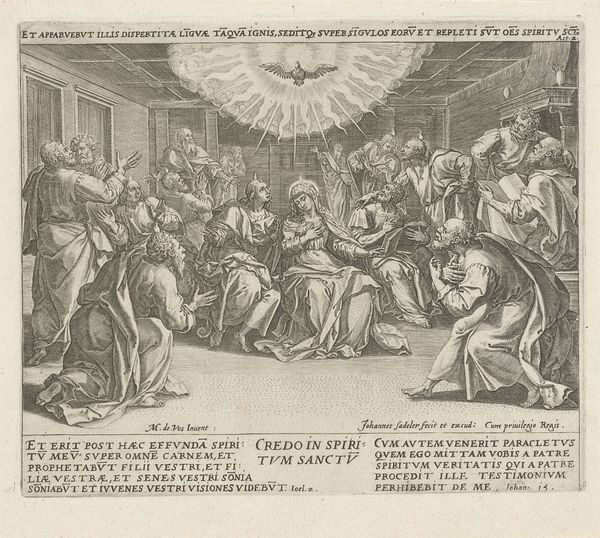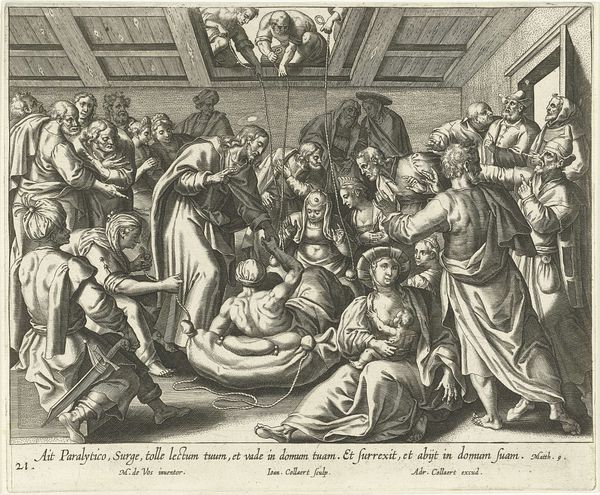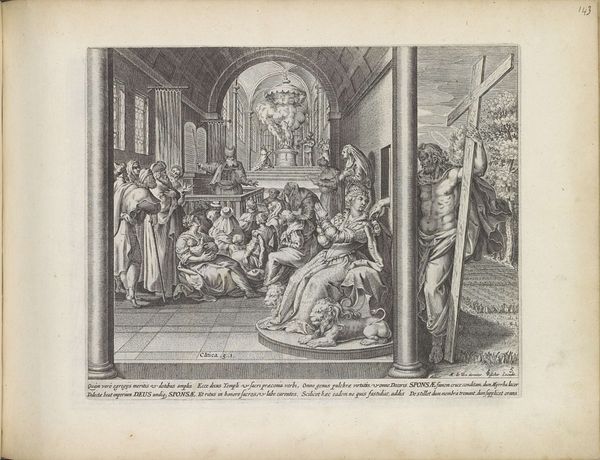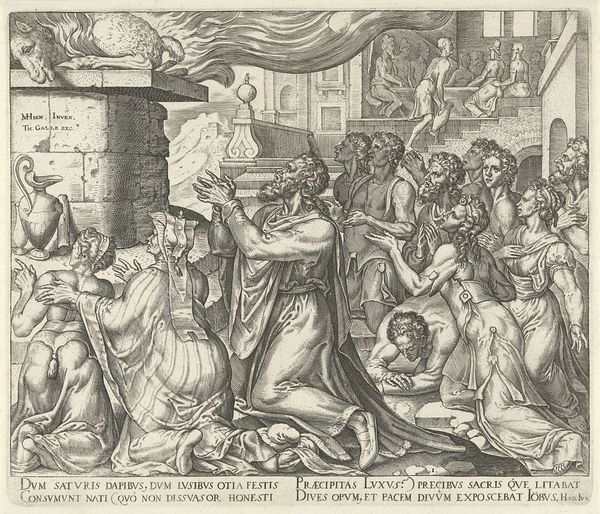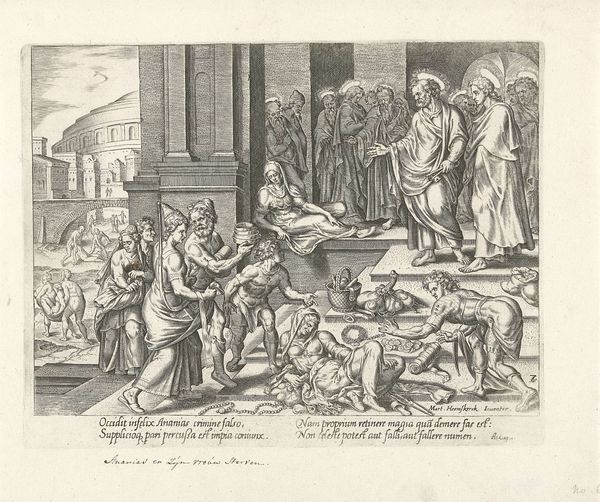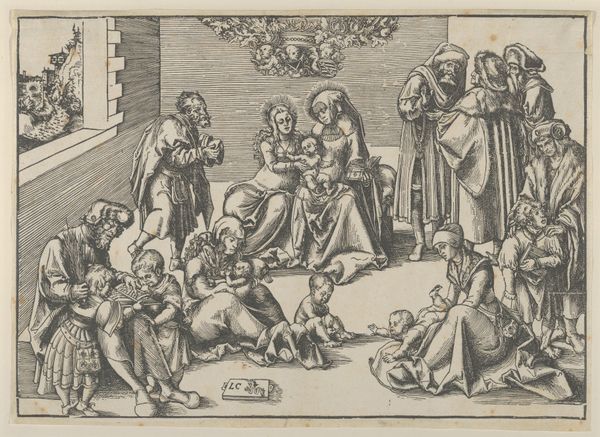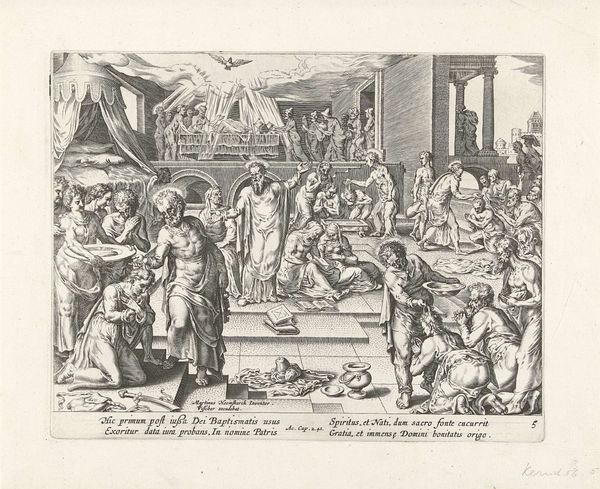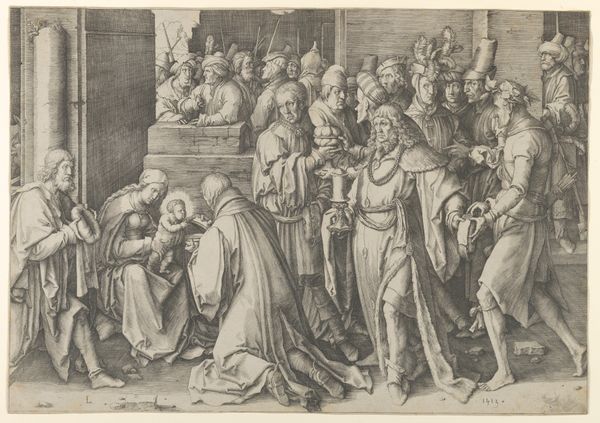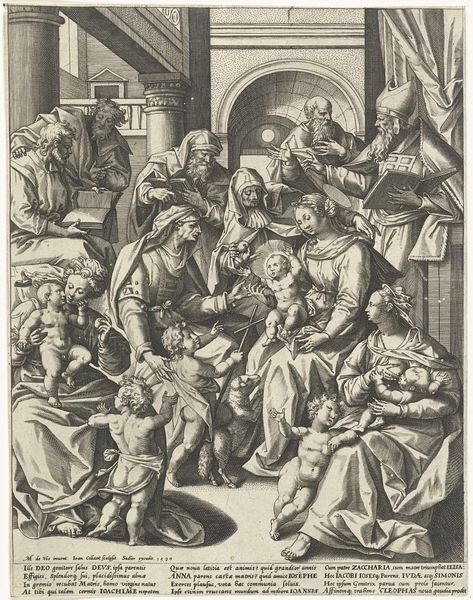
print, engraving
#
narrative-art
# print
#
old engraving style
#
figuration
#
genre-painting
#
history-painting
#
northern-renaissance
#
engraving
Dimensions: height 199 mm, width 265 mm
Copyright: Rijks Museum: Open Domain
Curator: Let’s turn our attention to a 16th-century engraving, “Paulus wekt Eutychus op,” or “Paul Raising Eutychus,” created between 1580 and 1584 by Philips Galle, now in the Rijksmuseum. Editor: This is fascinating. Look at the level of detail achievable in a print. It feels almost claustrophobic—so many figures packed into a seemingly small space, heavy with candlelight. I’m immediately drawn to the sheer labor involved. Curator: Galle, a prominent printmaker in Antwerp, created this work as part of a series illustrating the Acts of the Apostles. What you are seeing here represents the moment Paul, during a late-night sermon, revives the young man Eutychus who had fallen asleep and tumbled from a window. It showcases not only the religious narrative, of course, but also the artistic interpretation and dissemination of scripture. Editor: Exactly, and note the material context—the candlelight pointing towards their gathering. Think about how these prints would have functioned—were they designed to circulate among other artisans? Or, to be distributed more broadly by the Church? Curator: Well, Galle’s workshop produced prints for a variety of patrons, from individual collectors to religious institutions. Prints like this helped spread the ideals of the Counter-Reformation by visually reinforcing scriptural stories and moral lessons. These would become models and source material to draw from. Editor: The technique is so intricate— look at the fine lines that build form, create light and shadow. What’s amazing is how Galle transformed the labor of printmaking into an expressive medium. The figures seem to swell with emotion and humanity. And how it captures and reflects power. Curator: I’d agree with you that this is a striking example of the Northern Renaissance style. Note how Galle depicts interior space and attempts to balance realism with theological intention. And as it traveled to different destinations, that visual story changed again and again through the communities consuming them. Editor: Looking at the whole composition reminds me of artisanal craft in a changing environment: from raw materials to its form reflecting culture through skilled labour. Curator: It underscores, ultimately, how the act of reproducing biblical stories through print shaped religious and artistic discourse of the time. Editor: Definitely, it shows how a narrative—a set of social practices and material processes—worked hand-in-hand during the Reformation.
Comments
No comments
Be the first to comment and join the conversation on the ultimate creative platform.
